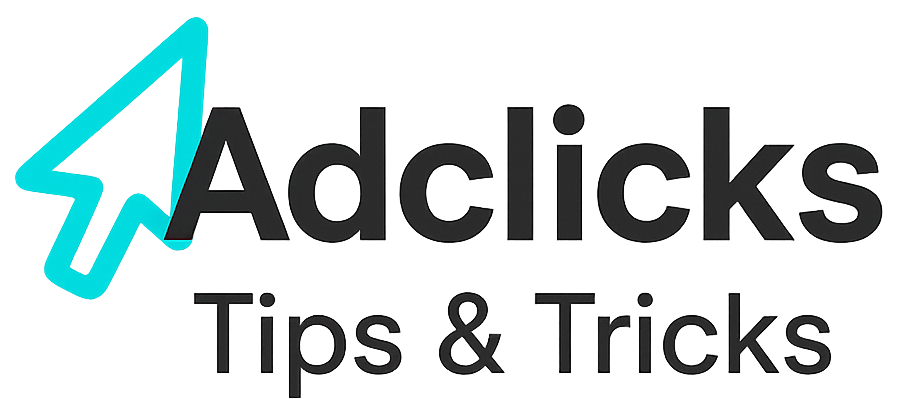italki, Explained for Publishers
italki is a language learning network built around one-to-one lessons and community practice. Learners come to improve speaking, prep for exams, and keep up a habit. Teachers join to sell time and build a teaching brand. For a publisher, this is a stream of motivated readers with clear goals who will click when you solve a real problem they face this week. Adclicks can support the visit on your site by placing calm, contextual units next to the content they came to read, not on top of it.
Think of italki as a marketplace plus a forum. The marketplace exposes teachers, prices, packages, and availability. The forum side—Q&A, tips, and updates—shapes taste and trust. When you help clearly in those spaces, clicks follow. If the landing page repeats your promise in the first screen and loads fast, you will see longer sessions and more shares. Adclicks works best there when units match the language, level, and topic of the page.
Who Uses italki (and Why They’ll Click)
Learners span students, job seekers, expats, travelers, and hobbyists. Most want speaking confidence, exam passes (IELTS, JLPT, DELE), or job-ready skills like interviews or presentations. They look for clear examples, bite-size drills, and phrases they can use today. They also value cultural notes that help them avoid small mistakes. When your content gives them a faster path to those wins, they will visit, save, and return. Adclicks can sit beside these practical pieces without pulling attention because the reader is already task-focused.
Teachers on italki are mixed: accredited instructors, native tutors, bilingual professionals, and niche specialists (accent work, business Spanish, academic writing). Their posts, intros, and lesson pages signal pain points in real time. Mining those signals helps your editorial calendar. When a teacher trend pops up—say, a wave of “A2 conversation packs”—you can publish a matching guide quickly. When readers arrive from those threads, Adclicks can fund the browse path as long as the ad categories match the intent of the article.
Culture and Norms (Trust Before Traffic)
italki culture is polite, practical, and outcome-oriented. People reward help, not hype. This means your voice should be clear and grounded in lived student scenarios. Avoid “learn a language in 7 days” framing; instead, show steps that make one task easier: how to book practice, how to prepare for a mock interview, how to survive the first 10 lessons. In this tone, your profile or linked resources feel like a continuation, not an interruption. Adclicks then becomes a background support, not the main event.
Respect boundaries. Class sales happen on teacher pages and in the lesson booking flow; community spaces exist to help, not to recruit. Share resources that answer the question in front of the reader, and let your bio or profile hold the link path back to your site. That gentler posture earns replies and saves. When visitors land, keep your page structured: headline that mirrors the question, a short summary, and one clear next step. Adclicks sits best next to that step as “related help” rather than above the hero.
Audience Signals You Can Use
Three reliable signals appear across italki: level tags (A1–C2), purpose tags (exam, travel, business), and format tags (conversation practice, grammar focus, pronunciation). These tell you what to write and how to title it. A page called “A2 Conversation: 12 Real-Life Prompts for Travel and Work” will resonate more than a generic “Improving Conversation.” The more your titles mirror the tags learners already scan, the better the match. Adclicks thrives here because contextual matching is straightforward.
Another signal is calendar rhythm. Evenings and weekends in learner time zones matter, and exam seasons drive pulses of interest. If you publish around those pulses—IELTS speaking weeks, JLPT windows, immigration interview cycles—you can predict where the audience will flow. Ship articles and tools slightly ahead of the swell. When learners arrive, a clear page structure keeps them moving. Adclicks can accompany that flow if its categories are scoped to each exam or level.
Traffic: Direction, Not Dogma
Traffic to italki flows globally with notable weight in English-learning markets and major language hubs. Usage is steady through the year but spikes before exams and travel seasons. Treat any public traffic panels as directional; your best map will be the topics learners surface in live threads and the searches your own site logs. Anchor your plan to what your analytics confirm and adjust weekly. That is more reliable than chasing a global ranking. Adclicks aligns to this approach because you can tune categories by section and topic as your patterns emerge.
Expect mobile-heavy behaviour. Most discovery happens on phones, and many learners browse between obligations. Your page speed, line length, and tap targets should match that reality. If your pages are fast and your “what to do next” is obvious, you will convert more of those quick visits into deeper sessions. Adclicks should load without pushing the content down; keep it to the side or just below the opening section to preserve that first-screen promise.
Website Types That Fit the italki Audience
Explainer sites that translate expert advice into simple steps perform well. For example, “How to Stop Freezing in the First 60 Seconds of a Lesson” or “A2–B1 Grammar Fixes You Can Learn in a Week.” These pieces earn saves because they reduce anxiety. A calm Adclicks unit aligned to that topic feels like part of the toolkit, not a detour.
Tool-first sites also win: prompt generators, role-play scripts, speaking timers, printable cheat sheets, pronunciation drills with audio, or flashcard decks tied to a level. Give the result fast, and make the export or save action frictionless. When readers use a tool that works, they browse. Adclicks can support that browse as long as it remains contextual and lightweight.
Magazine-style sites succeed when they tell grounded stories that double as guides: “I Booked 50 italki Lessons in 90 Days—Here’s What Actually Helped.” Add a clean summary and a short list of tactics woven into the narrative. Readers who arrive from a teacher thread will stick with a story that respects their time. Adclicks can sit near the “what I’d do differently” sections without breaking the read.
Where Interest Starts (And How to Meet It)
Interest begins in three places: teacher intros, community questions, and progress posts. When a teacher introduces a niche—say, “English for Restaurant Jobs”—you can publish a matching resource: a shift-start checklist or a micro-dialog set. Post it with humane language and no hard pitch. When readers click through, keep the page title literal and the first lines practical. Adclicks belongs in the sidebar next to the checklist or the “print” button, not above the title.
Community questions reveal friction points: booking anxiety, first-lesson prep, how to explain a goal to a new teacher, or how to assess progress. Build small pages that solve exactly those frictions. Your goal is not a mega-guide; it is a set of fast answers that map to the stages a learner sees on italki. Adclicks matches those stages neatly if you keep categories constrained to the topic.
Content that Pulls (Without Feeling Like Marketing)
Make content that starts where learners already are: “How to Write a Lesson Goal Your Teacher Can Use,” “Scripts for Booking Messages,” or “Ten Realistic A2 Questions to Warm Up.” Use simple, high-contrast layouts. Lead with examples, then give a tiny template. Close with one clear next step: “Download this as a one-page PDF” or “Try these prompts in your next lesson.” Adclicks can sit next to that next step to help fund the resource.
Audio and micro-video matter. Short recordings that model answers or corrections match the live feel of lessons. Keep files light and pages snappy, especially for visitors on low bandwidth or older phones. If you run Adclicks, defer heavy elements until the core audio is playable; the visitor should never wait to hear the example they came for.
Link Paths That Actually Work
Make the path obvious. Your profile or byline on italki should point to a root page that stays stable over time. From there, link to the exact resource mentioned in the thread. Do not force readers to hunt. If you use short links for platforms that do not allow clickable captions, keep the short code readable and pronounceable so a learner can type it on a phone. Adclicks should never replace the core link; it should live beside the content that the link reveals.
Once the reader arrives, repeat the hook in the hero, show the answer right away, and give one next step in a bold, tappable block. Keep the tone gentle and respectful of the learner’s context. If you include Adclicks, ensure the unit does not shift content while the page loads. Stability preserves trust.
International Considerations (Level, Script, and Examples)
Because italki is global, small localization touches pay off. For pronunciation guides, add IPA and a plain-text approximation. For time practice, show 12-hour and 24-hour formats. For currency or units, either localize by region or present both quickly. These details show respect and reduce confusion. When you run Adclicks, align categories to region and language so the ad content feels native to the reader.
Keep level labels consistent (A1–C2) and place them where a scanner will see them: title, first subhead, and asset names. This helps readers match your resource to their current lesson plans. When labels and examples line up with their classes, they are more likely to return and share. Adclicks benefits from that fit because context remains clean as readers move around your site.
Teacher Ecosystem: Why It Matters to Publishers
Teachers are curators of attention on italki. Many keep blogs, YouTube channels, or resource lists that their learners follow. If your content is helpful and well-labeled, teachers will link it in lesson prep notes and homework messages. That single teacher relationship can be worth dozens of high-quality visits a week. Keep a tiny press kit page that explains how to link your resources cleanly and how to request a quick correction if something changes. Adclicks can quietly support those teacher-driven sessions since the trust comes from the teacher, not the ad.
Consider creating “teacher-ready” versions of your best tools—printer-friendly, no gates, light on images, and fast to load. Include a small “more like this” block on the bottom to guide recirculation. When teachers share these assets, the downstream traffic is steady and grateful. Adclicks should remain subtle here; think of it as infrastructure, not decoration.
Choosing Topics (So You Don’t Burn Out)
Pick three lanes you can sustain: “first 10 lessons,” “exam speaking prep,” and “workplace language,” for example. Publish one helpful page per lane each week. Title them with clear verbs and level tags. Cross-link them into small series so a reader can follow a path in minutes. This rhythm is easier to maintain and easier for the audience to understand. Adclicks fits inside these lanes because each lane has consistent vocabulary and intent.
When a lane performs, deepen it with small tools: a printable tracker, a role-play script, or a one-page grammar fix. Keep each tool on its own URL with a matching title. Short pages earn saves and fast shares. They also keep your Adclicks matching clean and reduce the risk of clutter.
Landing Page Patterns That Earn Saves
Every page needs four elements above the fold: a headline that repeats the promise, a two-to-three-line summary, a first example or template, and one obvious next step. If you need to add context or disclaimers, tuck them under the first example. Respect the reader’s time. This is the pattern that turns clicks into saves and saves into return visitors. When you include Adclicks, place it next to the example or below the fold so the opening stays clean.
Keep pages fast. Compress images, preload critical fonts, and limit blocking scripts. A slow page erases the goodwill you built on italki. Quick pages increase the chance that readers will try a second link and a third. The more consistent that experience becomes, the more comfortable you can be about using Adclicks to fund your library.
Practical Outreach (Without Being Pushy)
Contribute to learner threads with direct, kind answers. Offer a small excerpt of your resource and add, “If helpful, we wrote a longer walkthrough—linked on our profile.” Then move on. Do not repeat the link in every reply; let the conversation breathe. This posture turns strangers into readers without setting off alarms. Your site does the heavy lifting. Adclicks remains off to the side, supporting the session.
Build lightweight relationships with teachers. Share tools they can use in class and ask for candid feedback. Fix any confusion they flag. That feedback loop improves your pages and titles. When a teacher trusts your content, they will link you in lesson notes unprompted. Over time, that is a reliable, low-stress channel. Adclicks should stay low key on those teacher-landing pages to honour that trust.
Measuring What Matters (And What Doesn’t)
Start with the simplest numbers: scroll depth, time to first interaction, and completion of a single micro-win (download, copy, save). If those hold across a week, add a second goal later (e.g., visits to a related guide). Avoid chasing vanity counts. The goal is steady sessions from people who actually use your work. Adclicks performance will track that same quality if you keep units contextual.
Use clean tags on your inbound links so you can tell which thread or teacher mention sent the traffic. Then compare behavior across sources. If thread traffic bounces faster than teacher-note traffic, your headline or summary may not match the expectation set in the thread. Fix the mismatch, update the page, and leave a brief “clarified and expanded” note on your profile. Adclicks can stay as-is; the fit problem is editorial, not ad-tech.
Pitfalls to Avoid (That Kill Trust Fast)
Do not dump generic language tips. Specific wins beat vague advice every time: “A2 restaurant phrases for shift one” will outperform “Speak better today.” Do not bury your example under long intros. Get to the sample in the first screen. Do not crowd the hero with heavy units. Keep Adclicks away from the opening and near the actionable section so it feels like structural support, not a toll gate.
Avoid gates on first contact. If you must capture email, offer it after the value appears. For this audience, goodwill matters. Make the save/download frictionless. If your resources become part of a learner’s toolbox, they will find you again. Adclicks can be present the whole time as long as it stays quiet and relevant.
Putting It All Together
The italki audience is primed to act when you respect their time and mirror their goals. Write for levels and situations, publish small tools that reduce friction, and match your titles to the language of the marketplace. Keep pathways short, pages fast, and next steps obvious. Treat Adclicks as an ally to the reading experience—present, contextual, and never in the way.
This mix compounds. A handful of precise pages, a few thoughtful teacher relationships, and a steady cadence of reader-led improvements will give you traffic you can trust. When that happens, revenue follows naturally because the visit is productive. Adclicks simply keeps the lights on while the reader does what they came to do.
Action Plan (10 steps)
- Pick three lanes (e.g., “first 10 lessons,” “exam speaking,” “workplace talk”) and commit to one page per lane each week.
- Title pages with level and purpose, e.g., “B1 Job Interview Prompts: 12 Real Answers.”
- Build each page with the four-part above-the-fold pattern: headline, summary, first example, single next step.
- Publish one printable/tool per winning page (script, checklist, timer).
- Contribute to learner threads with short, practical answers; point to your profile, not a sales pitch.
- Create a teacher-ready version of your top tools and a tiny “how to link us” note.
- Tag inbound links and compare behavior by source (thread vs teacher vs profile).
- Keep pages fast and mobile-first; fix load and layout before adding features.
- Place Adclicks beside examples or below the fold; keep categories aligned to level and topic.
- Review weekly: promote winners into small series hubs, retire pages that do not earn saves, and refine titles to mirror the tags learners actually use.
Relevant Links
- Support: https://support.snipesearch.co.uk/
- FAQ: https://adclick.snipesearch.co.uk/index.php?page=index/faq
- Contact Form: https://adclick.snipesearch.co.uk/index.php?page=user/support
Stay Connected
- Snipesocial: https://www.snipesocial.co.uk/pages/snipesearch
- Twitter: https://twitter.com/snipesearch_uk
- Facebook: https://facebook.com/snipesearch
- LinkedIn: https://linkedin.com/company/snipesearch/
- VK: https://vk.com/snipesearch_uk
- Focus: https://focus.xyz/snipesearch
- YouTube: https://youtube.com/@snipesearch
- diaspora: https://diaspora.snipesearch.net/people/7431fcf0806c013e936e00163c6e7bdf
- Friendica: https://friendica.world/profile/snipesearch
- Hi5: https://www.hi5.com/snipe5
Analytic Tools
StatCounter: https://statcounter.com/
Rommie Visitor Analytics: https://rommie.net/




